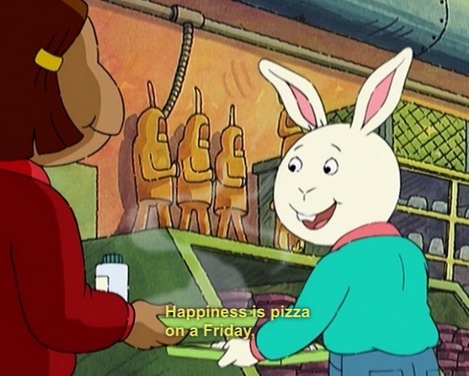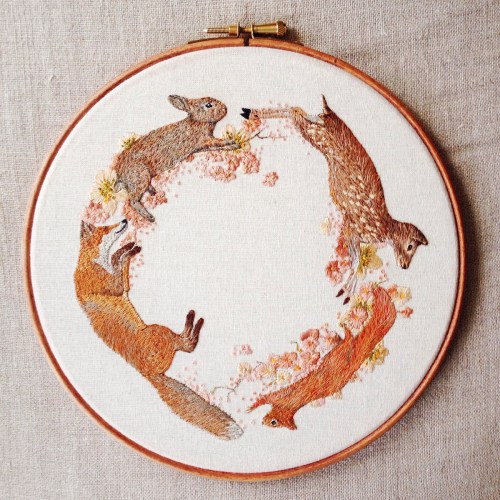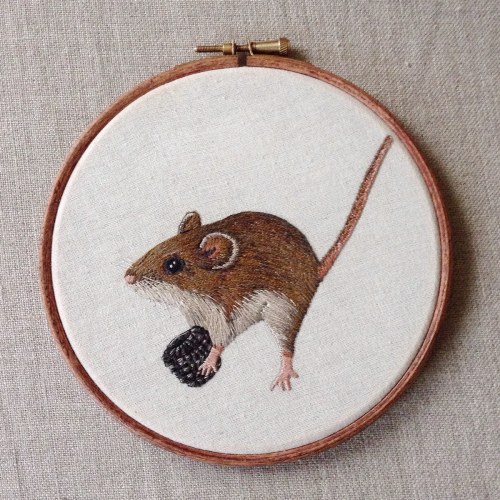Lanas-own-blog - My Personal Space.

More Posts from Lanas-own-blog and Others

me @ myself: get it together.....
also me @ myself: ur literally going through a lot rn? cut yourself some slack?
also also me @ myself: ...anyway....i hate my entire self











How to stabilize a wobbly table?
You are in a restaurant and you find that your table wobbles. What do you do? Most people either put up with it, or they attempt to correct the problem by pushing a folded table napkin under one of the legs. But mathematicians can go one better. A couple of years ago, four mathematicians published a research paper in which they proved that if you rotate the table about its center, you will always find an orientation where the table is perfectly stable.
This problem - as a math problem - has been around since the 1960s, when a British mathematician called Roger Fenn first formulated it. In 1973, the famous math columnist Martin Gardner wrote about the problem in his Scientific American column, presenting a short, clever, intuitive argument to show how rotation will always stop the wobble. Here is that argument.
This only works for a table with equal legs, where the wobble is caused by an uneven floor. However uneven the floor, a table will always rest on at least three legs, even if one leg is in the air. Suppose the four corners are labeled A, B, C, D going clockwise round the table, and that leg A is in the air. If the floor were made of, say, sand, and you were to push down on legs A and B, leaving C and D fixed, then you could bring A into contact with the floor, but leg B would now extend into the sand. Okay so far?
Here comes the clever part. Since all four legs are equal, instead of pushing down on one side of the table, you could rotate the table clockwise through 90 degrees, keeping legs B, C and D flat on the ground, so that it ends up in the same position as when you pushed it down, except it would now be leg A that is pushed into the sand and legs B, C, and D are all resting on the floor. Since leg A begins in the air and ends up beneath the surface, while legs B, C, and D remain flat on the floor, at some point in the rotation leg A must have first come into contact with the ground. When it does, you have eliminated the wobble.The result follows from the Intermediate Value Theorem (Proof).
For more - VIDEO: Fix a Wobbly Table (with Math) by Numberphile.
Consider an interval I = [a, b] in the real numbers ℝ and a continuous function f : I → ℝ. Then, Version I. if u is a number between f(a) and f(b), f(a) < u < f(b) (or f(a) > u > f(b) ), then there is a c ∈ (a, b) such that f(c) = u.

This argument seems convincing, but making it mathematically precise turned out to be fairly hard. In fact, it took over 30 years to figure it out. The solution, presented in the paper Mathematical Table Turning Revisited, by Bill Baritompa, Rainer Loewen, Burkard Polster, and Marty Ross, is available online at Mathematical table turning revisited 19, Nov 2005, http://Arxiv.org/abs/math/0511490
The result follows from the Intermediate Value Theorem. But getting it to work proved much harder than some other equally cute, real-world applications of the IVT, such as the fact that at any moment in time, there is always at least one location on the earth’s surface where the temperature is exactly the same as at the location diametrically opposite on the other side of the globe. As the authors of the 2005 solution paper observe, “for arbitrary continuous ground functions, it appears just about impossible to turn [the] intuitive argument into a rigorous proof. In particular, it seems very difficult to suitably model the rotating action, so that the vertical distance of the hovering vertices depends continuously upon the rotation angle, and such that we can always be sure to finish in the end position.” The new proof works provided the ground never tilts more than 35 degrees. (If it did, your wine glass would probably fall over and the pasta would slide off your plate, so in practice this is not much of a limitation.) Is the theorem any use? Or is it one of those cases where the result might be unimportant but the math used to solve it has other, important applications?…… “I have to say that, other than the importance of the IVT itself, I can’t see any application other than fixing wobbly tables. Though I guess it does demonstrate that mathematicians do know their tables”- Mathematician Keith Devlin.
[SOURCE - MAA.org, K. Devlin, Feb. 2007]
[PDF] On the stability of four legged tables, A. Martin, 15 Aug. 2006: Proving that a perfect square table with four legs , place on continuous irregular ground with a local slope of at most 14.4 degrees and later 35 degrees, can be put into equilibrium on the ground by a “rotation” of less than 90 degrees. And Discussing the case of non-square tables and make the conjecture that equilibrium can be found if the four feet lie on a circle.
Also, I think we can add an actual argument: “The table would be stability (not wobble) if their four legs contact the ground - not necessarily that they have lie on the same flat surface ”, then everything will be easier to approach the problem that the authors wrote.






Pickering’s Triangle










Delicate Nature and Animal Embroidery by Emillie Ferris
UK artist Emillie Ferris composes stunning embroidery illustrations of wildlife and nature into pendants and oval frames. Depicting delicate animals, such as butterflies, deers and rabbits, Ferris’ choice of wildlife subjects exist in the realms of an ethereal forest.
Her embroidery technique displays meticulous talent and detail to color, shape, as well as the texture of fur, which stands out against a clean off-white background. You can find more of her dainty designs at her Etsy shop!

Incredible “EPIC” View Of The Moon Passing In Front Of The Earth
This is real, folks. It is not a computer-generated animation. NASA’s DSCOVR (Deep Space Climate Observatory) satellite took these incredible shots on July 16 using its Earth-facing EPIC camera from its vantage point between the Earth and the Sun, a million miles away!
DSCOVR sits at what’s known as the L1 Lagrangian point, where the gravitational pull of the Earth and Sun balance out in such a way that satellites positioned there can remain in stable orbit while using minimal energy:

Image: NASA/NOAA
This view of the far side of the Moon reminds us that it is anything but dark. The Moon is tidally locked, meaning that we see the same face all the time, but the sun regularly shines on the side that we don’t see (we’re just seeing a new or crescent moon when that happens). The far side also lacks the dark plains, or maria, that texture the Earth-facing side, made of basalt laid down by ancient lunar lava flows, reminding us that our lunar satellite has a complex geologic history:

Milky Way over Bear Lake in Rocky Mountain National Park, CO
js

NGC 5189.
Credit: NASA, ESA and The Hubble Heritage Team (STScI/AURA)
-
 shrewdgrace liked this · 1 week ago
shrewdgrace liked this · 1 week ago -
 weirdcoregal35 liked this · 2 months ago
weirdcoregal35 liked this · 2 months ago -
 seraphim-seeker reblogged this · 2 months ago
seraphim-seeker reblogged this · 2 months ago -
 seraphim-seeker liked this · 2 months ago
seraphim-seeker liked this · 2 months ago -
 solarflaresdaddyissues liked this · 2 months ago
solarflaresdaddyissues liked this · 2 months ago -
 multifandomcutie13 reblogged this · 2 months ago
multifandomcutie13 reblogged this · 2 months ago -
 multifandomcutie13 liked this · 2 months ago
multifandomcutie13 liked this · 2 months ago -
 withanael liked this · 2 months ago
withanael liked this · 2 months ago -
 thebestquoteseva reblogged this · 2 months ago
thebestquoteseva reblogged this · 2 months ago -
 reluctant-neutral liked this · 5 months ago
reluctant-neutral liked this · 5 months ago -
 annita89dbkatrdmh liked this · 6 months ago
annita89dbkatrdmh liked this · 6 months ago -
 anotherdayanothername liked this · 6 months ago
anotherdayanothername liked this · 6 months ago -
 xhashaseed liked this · 6 months ago
xhashaseed liked this · 6 months ago -
 anna0vu7g liked this · 6 months ago
anna0vu7g liked this · 6 months ago -
 annita899lsv94h liked this · 6 months ago
annita899lsv94h liked this · 6 months ago -
 neonpasta liked this · 6 months ago
neonpasta liked this · 6 months ago -
 violetbooklover liked this · 8 months ago
violetbooklover liked this · 8 months ago -
 sade--panda reblogged this · 8 months ago
sade--panda reblogged this · 8 months ago -
 omgherbalicious liked this · 8 months ago
omgherbalicious liked this · 8 months ago -
 huntressheather reblogged this · 9 months ago
huntressheather reblogged this · 9 months ago -
 peener reblogged this · 9 months ago
peener reblogged this · 9 months ago -
 peener liked this · 9 months ago
peener liked this · 9 months ago -
 theeloneliestb0nes333 reblogged this · 9 months ago
theeloneliestb0nes333 reblogged this · 9 months ago -
 dalilcrae liked this · 9 months ago
dalilcrae liked this · 9 months ago -
 agua-benditaaa reblogged this · 9 months ago
agua-benditaaa reblogged this · 9 months ago -
 em0ookidwithplants liked this · 9 months ago
em0ookidwithplants liked this · 9 months ago -
 ari-levinsons-girl reblogged this · 9 months ago
ari-levinsons-girl reblogged this · 9 months ago -
 the-stars-are-where-i-belong reblogged this · 9 months ago
the-stars-are-where-i-belong reblogged this · 9 months ago -
 universalstudent liked this · 9 months ago
universalstudent liked this · 9 months ago -
 imnothingbutroublee reblogged this · 9 months ago
imnothingbutroublee reblogged this · 9 months ago -
 bethlxxx liked this · 9 months ago
bethlxxx liked this · 9 months ago -
 forestmousy reblogged this · 9 months ago
forestmousy reblogged this · 9 months ago -
 delicatelylivingloudly liked this · 9 months ago
delicatelylivingloudly liked this · 9 months ago -
 time-to-raise-hell liked this · 9 months ago
time-to-raise-hell liked this · 9 months ago -
 cris93 liked this · 9 months ago
cris93 liked this · 9 months ago -
 sonzosh reblogged this · 9 months ago
sonzosh reblogged this · 9 months ago -
 fiestysassybrat reblogged this · 9 months ago
fiestysassybrat reblogged this · 9 months ago -
 fiestysassybrat liked this · 9 months ago
fiestysassybrat liked this · 9 months ago -
 buglike-anangel reblogged this · 9 months ago
buglike-anangel reblogged this · 9 months ago -
 swaddle liked this · 9 months ago
swaddle liked this · 9 months ago
I've had lots of blogs in the past, but this one I'm actualy excited to share with people.
68 posts